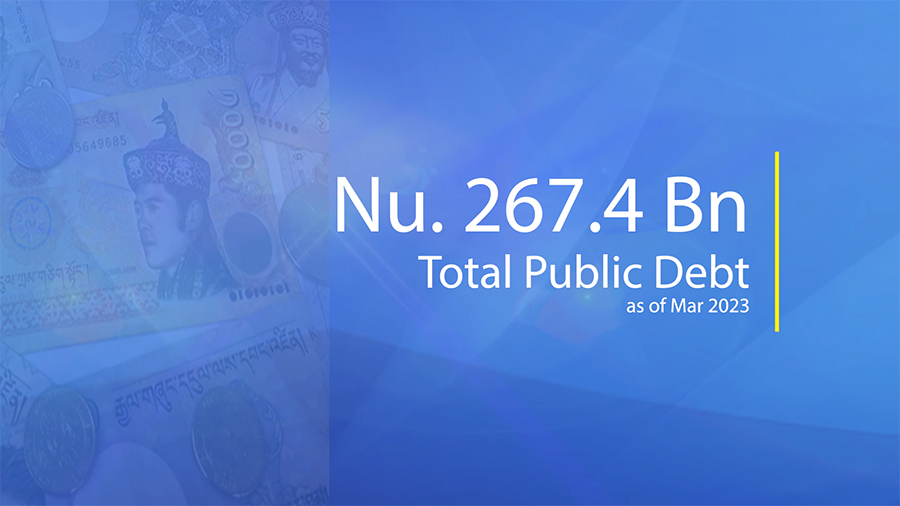
The country’s total public debt has increased by Nu 2.56bn in the first quarter of this year according to the finance ministry’s Public Debt Situation report. The total public debt stock as of 31st of March is Nu 267.40bn. The debt stock comprises an external debt of Nu 240.85bn, and a domestic debt of Nu 26.55bn. Despite elevated levels of public debt, the report states that the overall risk of the debt is deemed manageable, and external debt distress is considered moderate.
The total public debt stock increased by Nu 2.56bn from the preceding quarter in December 2022.
The external debt stock increased by Nu 3.21bn while the domestic debt declined marginally by Nu 650 M.
Of the total external debt of Nu 240.85bn, Nu 167.73bn is hydropower debt. The hydro debt comprises the total debt of six hydropower projects of Mangduechhu, PunatsangchhuI and II, Nikachhu, Dagachhu, and Basochhu.
The non-hydro debt stood at Nu 73.11bn, constituting 30.7 per cent of total external debt.
The Public Debt Policy 2016 requires non-hydro debt stock to be within 35 per cent of GDP during a five-year plan period. The current number stands at 31.5 per cent.
According to the report, a significant portion of external debt is on account of hydropower projects, which is deemed commercially viable, with a secured export market in India.
The report also states that over 90 per cent of the hydro debt is Indian Rupee denominated, which does not pose any exchange rate risks due to Bhutanese currency Ngultrum being pegged 1 to 1 with the Indian rupee.
As for the Nu 26.55bn domestic debt, 14 billion is for RGoB bonds, which has three, seven, 10 and 12 year maturity periods and Nu 11.85bn is for short term treasury bills.
The government also has government-guaranteed outstanding loans of Nu 5.06bn.
Sherub Dorji










